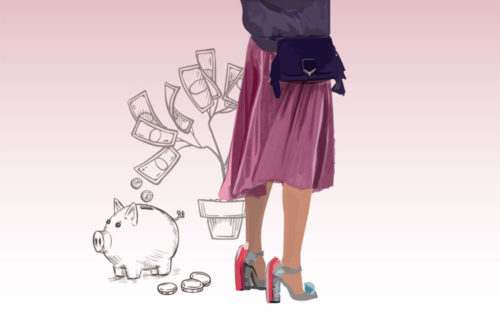Introduction to ISAs
ISA stands for Individual Savings Account. Simple right? There are ISAs for savings, first time home buyers, children and investment. Not so simple anymore. So let’s get serious, how many ISAs does one person really need? We nailed down the pros and cons of each below to help you answer this financial conundrum.
Here’s some background
Different ISAs have different uses but they all have one thing in common – they’re tax-free. That means any income you earn from money saved or invested in an ISA won’t be taxed. Each tax year, from April 6th to April 5th the following year, you can deposit up to £20,000 into your ISAs. This limit is the sum of all your ISAs, not for each.
There are 4 types of ISAs
You can only put money into one of each type of ISA each tax year. For example, you cannot hold two Cash ISAs and fund both of these in the same year.
The difference between ‘Cash’ and ‘Investment’ ISAs
These are the main ISA categories but they have very different uses. Cash ISAs are for receiving interest on your savings whilst Investment ISAs (aka Stocks and Shares ISAs) are for using money to make investments like buying into a fund or company shares. Both allow you to avoid paying tax on any gain you receive.
Side note: You can put money into a Cash ISA and an Investment ISA in the same tax year (from April 6th to April 5th the following year)
These are good if you have a large stash of savings earning a lot of interest (more than your Personal Saving Allowance) and don’t want it to be taxed by the government. Usually you have to lock your money in for at least a year and there are also 2, 3, or even 5 year options. Why choose one of those? The longer the term the higher the interest payments you’ll get. It’s best to shop around so here’s a list of the best paying Saving ISAs.
Help-to-Buy ISAs are a type of Cash ISA which provides a 25% bonus towards your first home. With this account you can save up to £1,200 in the first month then up to £200 a month after that. When you go to buy your first home, the government will add 25% to your balance. For example, if you deposit the maximum amount for two years for a £5,800 balance, when you go to buy your first home you get a £1,450 bonus (25%). Read more…
Big red flag: You cannot put money into more than one Cash ISA in the same tax year hence opening Help-to-Buy ISA prevents you from saving in a regular Cash ISA.
Junior Cash ISAs
Let’s face it, your messy, whiny but oh-so-lovable children will inevitably need your financial help in the future. And Junior ISAs are ideal for this. You can deposit up to £4,080 a year but there’s a slight catch – to get the tax-free interest payments you’ve got to keep your money in the account until Susie Q is 18 years old. The upside? Interest payments on Junior ISAs are higher than Saving ISAs because you’re committing your money for a much longer time.
Stocks & Shares ISA
When you invest in a fund or buy shares of companies you can earn income in two ways – capital gains and dividend payments. Not familiar with this lingo? Read our guide Introduction to Buying Shares.
The government lets you earn up to £11,100 in capital gains and up to £5,000 in dividends tax-free each year. If you expect to go over these limits (big high five to you if so!) you might want to consider a Stocks & Shares ISA because this account lets you make investments without being taxed on the earnings.
Innovative Finance ISA
You would open this ISA if you wanted to invest your money via a peer-to-peer platform. Any interest or capital gain you receive will be tax-free.
Lifetime ISA (a.k.a. LISA)
A LISA also provides you with a 25% government bonus towards buying your first home. While it’s very similar to the Help-to-Buy ISA there are some important differences.
With this account you can save up to £4,000 each tax year and can deposit into the account at your own pace as there’s no monthly deposit limit. The bonus is paid monthly. Read more…









